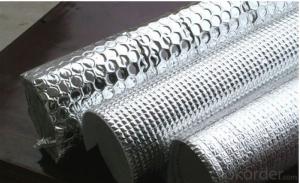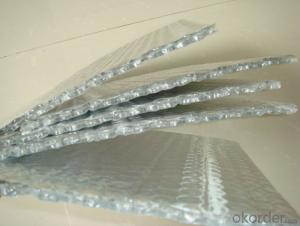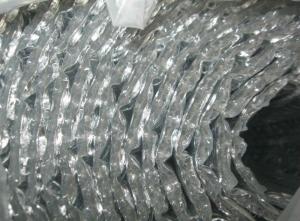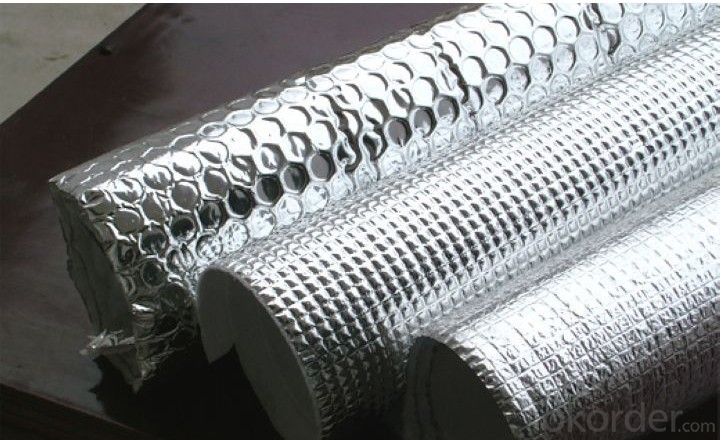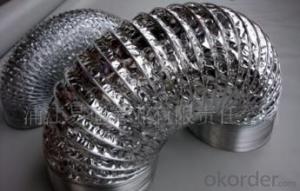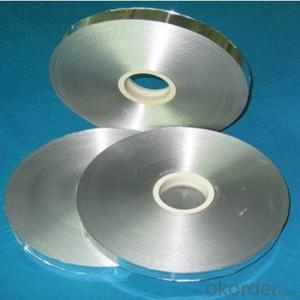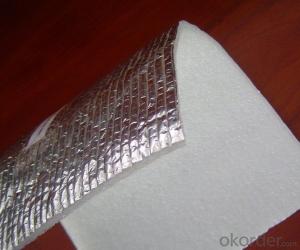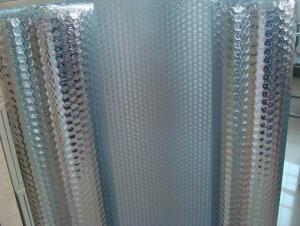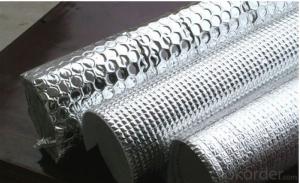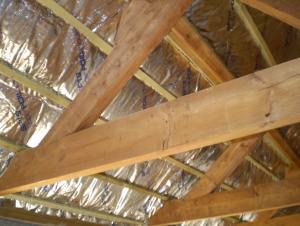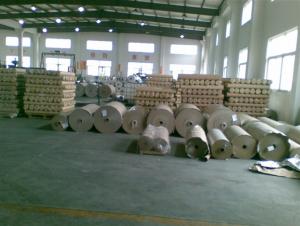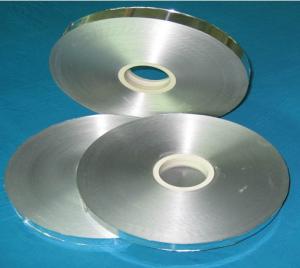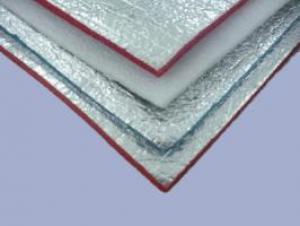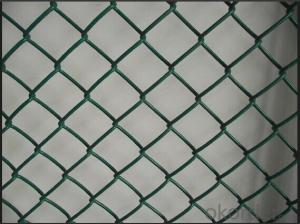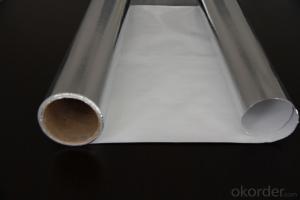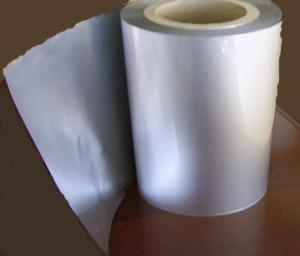Aluminum Foil Facing Single Air Bubble Insulation
- Loading Port:
- Shanghai
- Payment Terms:
- TT OR LC
- Min Order Qty:
- 1000 m²
- Supply Capability:
- 200000 m²/month
OKorder Service Pledge
OKorder Financial Service
You Might Also Like
Single air Bubble with Aluminum Foil Facing
Product Introduction:
The product consists of two layers of aluminum foil with plastic bubble laminated between the aluminum foil, provides excellent insulation: Reflects up to 97% of radiant energy in addition to resisting other types of heat transfer from conduction, convection and radiation. The two side aluminum foil forms an effective barrier against moisture, air currents and vapors.
It is an economical solution for a wide range of industrial, manufacturing and consumer applications.
Specification:
Name | Single Air Bubble with Aluminum Foil Facing |
Appearance | Silver/Customized |
Structure | Aluminum Foil/PE/bubble/PE/Aluminum Foil |
Width(cm) | 100 ~ 150 |
Length (m) | 50~200 |
Unit Weight | 250g/m2 |
Thickness | 3.5mm |
Bubble Diameter | 7mm,10mm,12mm,20mm,25mm,30mm,35mm |
Bubble Height | 2.5mm/3.8mm/4mm/5mm |
Water Vapor Transmission | 0.02g/m2KPA |
Thermal Conductivity | 0.034W/M0 |
Emissivity | 0.03~0.04COEF |
Reflectivity | 96%~97% |
Tensile Strength (MD) | 80N/25mm |
Tensile Strength(CMB) | 70N/25mm |
Bursting Strength | 195N |
Treatment | FR/VCI/Perforated available |
Temperature Resistance | 4 hours no decladding -60℃/180℃ |
Structure:
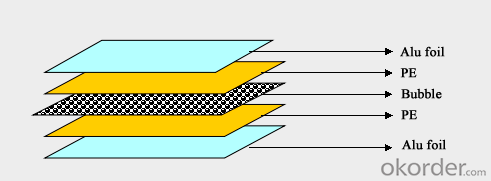
Other Products:
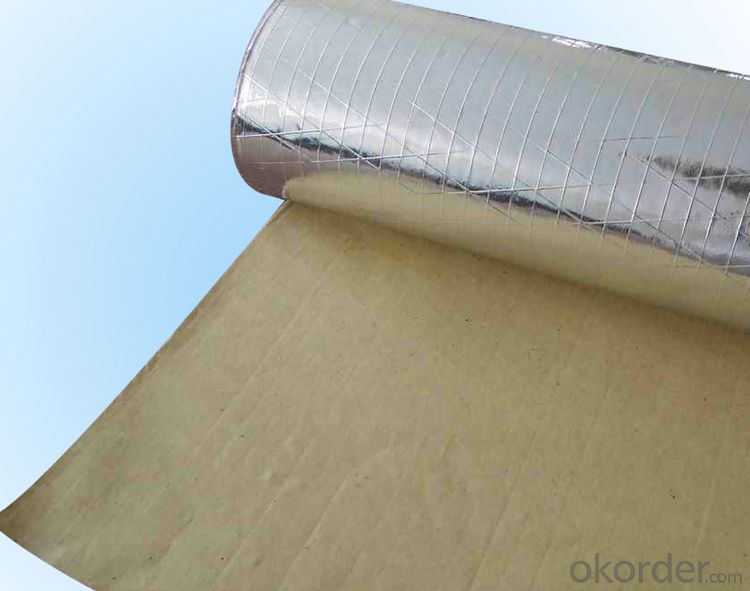
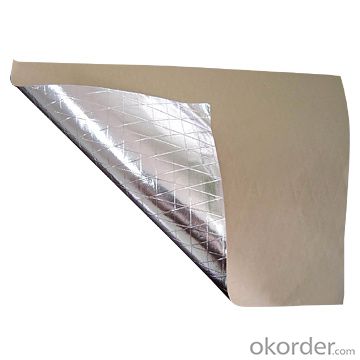
FAQ:
1. Where is your factory located in?
Factory is located in Jiangsu Province, Neat to Shanghai Port.
2. How long have you been in this product production?
We have been in the business more than 10 years,
3. Can we have some sample or trial order before bunk order?
Yes, we can provide you some free samples, and for trial order, we will offer you the lowest price.
- Q: This question asks for various purposes that aluminum foil facing can be used for, other than its conventional use.
- <p>Aluminum foil facing has several alternative uses. It can be used as a reflective surface to enhance the heat distribution in grilling or baking. It can also serve as a protective barrier in gardening to deter pests or as a makeshift sled for sliding on snow. Additionally, it can be used to clean stubborn stains or as a shield to protect surfaces from paint splatters during home improvement projects. Some people even use it for crafting or DIY projects due to its malleability and reflective properties.</p>
- Q: This question asks for the most suitable materials to be used in conjunction with aluminum foil facing.
- <p>The best materials to use with aluminum foil facing are those that are compatible with its properties. For insulation, materials like fiberglass or polyethylene foam are ideal due to their thermal resistance. For construction, materials such as plywood or drywall can be used as a backing, as they provide a sturdy base. When it comes to sealing, materials like butyl rubber or silicone are effective because they adhere well to aluminum foil and create a watertight seal. It's crucial to select materials that won't react chemically with aluminum and can withstand the environmental conditions in which the foil facing will be used.</p>
- Q: Is it possible to use aluminum foil facing more than once?
- <p>Yes, you can reuse aluminum foil facing for multiple uses. However, it's important to note that the effectiveness of the foil decreases with each use due to wear and tear. It may become less reflective and less effective at insulating heat. Make sure to clean it thoroughly after each use and inspect for any damage or tears before reusing. For best results, limit the number of times you reuse the foil facing to maintain its performance.</p>
- Q: This question asks for signs or methods to identify if the aluminum foil facing of a product, such as insulation or a jacket, is damaged or defective.
- <p>To determine if your aluminum foil facing is damaged or defective, look for visible signs such as tears, punctures, or holes. Check for any discoloration or rust, which could indicate corrosion. The foil should be smooth and uniform; any irregularities or bubbling might suggest a defect. Additionally, test the integrity by gently pulling or pressing the foil鈥攊f it easily tears or crumples, it may be compromised. For insulation, a damaged foil facing can lead to reduced effectiveness in heat or cold retention, so also consider the performance of the item.</p>
- Q: This question asks about potential health hazards linked to consuming food that has been wrapped in aluminum foil.
- <p>There are minimal health risks associated with eating food wrapped in aluminum foil. Aluminum foil is generally safe for cooking and food storage. However, it's important to avoid wrapping acidic or high-sodium foods in aluminum foil, as these can cause the foil to corrode and potentially release small amounts of aluminum. Long-term consumption of aluminum in large quantities has been linked to rare health issues, such as Alzheimer's disease, though this link is not definitively proven. To be safe, use aluminum foil sparingly and avoid wrapping foods that are highly acidic or salty.</p>
- Q: Is there a risk associated with using aluminum foil with raw meat or fish?
- <p>Yes, it is generally safe to use aluminum foil when handling raw meat or fish, as long as it is food-grade aluminum foil. Aluminum foil is designed to be non-toxic and resistant to corrosion, making it suitable for cooking and food preparation. However, it's important to ensure that the foil does not tear or puncture, as this could allow bacteria to contaminate the food. Additionally, avoid using aluminum foil in direct contact with acidic foods, as this can cause the foil to corrode and potentially release aluminum into the food. Always follow proper food safety guidelines when preparing and cooking with raw meats and fish.</p>
- Q: Is it possible to use aluminum foil with a non-stick coating as a substitute for non-stick baking or grilling pans?
- <p>Yes, aluminum foil facing can be used as a non-stick surface for baking pans or grilling pans. It provides a smooth, non-stick surface that prevents food from sticking and makes cleanup easier. However, it's important to ensure that the foil is heavy-duty and not too thin to avoid tearing during use. Additionally, while it can be a temporary solution, it's not as durable as a true non-stick surface and may require frequent replacement.</p>
- Q: Is it possible to use aluminum foil with a shiny side as a non-stick surface for cooking purposes?
- <p>Yes, you can use aluminum foil facing as a non-stick surface for cooking. The shiny side of aluminum foil is often used to create a non-stick surface, which can be helpful when grilling or baking to prevent food from sticking to the pan or grill. However, it's important to use it properly to avoid any potential health risks. Ensure that the foil doesn't touch the heat source directly for extended periods, as this can cause the foil to break down and release aluminum into the food. It's also recommended to use heavy-duty aluminum foil for cooking to ensure it can withstand higher temperatures without puncturing or melting.</p>
- Q: How can aluminum foil be organized in a kitchen drawer for easy access and to prevent it from crumpling?
- <p>The best way to store aluminum foil in a kitchen drawer is to use a foil storage box or a cardboard core. Cut off the cardboard tube from a roll of paper towels and place it inside the aluminum foil box. Unroll the foil and wind it around the cardboard tube, ensuring the shiny side is out. This prevents crumpling and makes it easy to tear off the desired amount. Alternatively, you can use a small plastic container with a tight-fitting lid to store the foil neatly and prevent it from unraveling.</p>
- Q: Explain the differences between aluminum foil facing and other types of food wrap.
- <p>Aluminum foil facing is a type of food wrap that is made from thin sheets of aluminum, which provides excellent barrier properties against air, moisture, and light. It is often used for cooking, baking, and preserving food. Unlike plastic wraps, it does not stick to food and can withstand high temperatures without melting. Other types of food wraps, such as plastic or cling wraps, are made from polymers and are not heat resistant. They are typically used for short-term food storage and are not suitable for cooking. Paper-based wraps, like parchment or wax paper, are used for baking and providing a non-stick surface but do not offer the same barrier properties as aluminum foil.</p>
Send your message to us
Aluminum Foil Facing Single Air Bubble Insulation
- Loading Port:
- Shanghai
- Payment Terms:
- TT OR LC
- Min Order Qty:
- 1000 m²
- Supply Capability:
- 200000 m²/month
OKorder Service Pledge
OKorder Financial Service
Similar products
Hot products
Hot Searches
Related keywords
